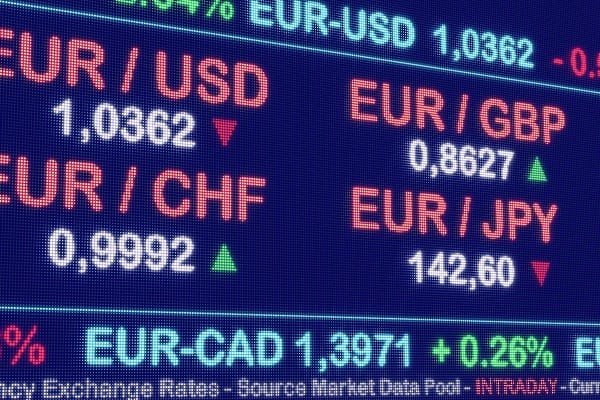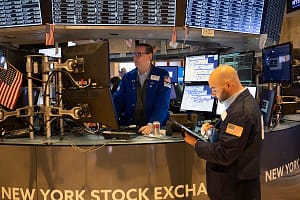Today, the Euro is trading sideways against the US Dollar (EUR/USD) and is settling near the 1.083 level.
However, the euro was able to consolidate and rebound after yesterday reaching its lowest level against the British pound (EUR/GBP) since last August, reaching the level of 0.85474 at the peak of today’s rises.
The stability of the euro today comes with a combination of mixed data on the performance of the Eurozone, in addition to the markets’ anticipation of the outcomes of the FOMC meeting, which we will witness tomorrow.
The euro’s gains against the pound sterling also come as the mixed performance figures for the Eurozone coincide with weak data for the mortgage market in England.
Today we witnessed a series of GDP figures in the Eurozone, which varied between weak performance in each of the region’s largest economies, Germany and France, and faster-than-expected growth in Spain and Italy.
The beginning was today with France, which, as expected, did not record any change in its economy during the fourth quarter of the previous year compared to the third quarter of the same year, but growth was higher by 0.7% compared to the fourth quarter of the year 2022.
As for the year 2023 As a whole, the gross domestic product grew by 0.9% compared to what it was in 2022, which in turn recorded a growth of 2.5%.
In detail, production from manufacturing was able to recover and achieve growth of a small percentage of 0.1% during the last quarter after a contraction of 0.2% in the previous quarter, supported by the increase in production from modes of transportation.
While production of services was stable without change after recording a slight growth of 0.1% in the third quarter. While production in the construction sector continued to contract rapidly by 0.7%, up from a previous contraction of 0.3% in the third quarter.
As for the most important activity in the economy, consumption, consumer spending growth shrank, in line with expectations, to 0.3% last December from 0.6% in November. However, it decreased by 0.6% in the fourth quarter compared to the third quarter, which recorded a growth of 0.6%.
While this growth in consumer spending in the last month of the year was supported by increased spending on energy and manufactured goods, in exchange for a decrease in spending on food. Spending on durable goods also continued to grow in December, supported by car purchases, in contrast to a decline in household consumption.
What was noticeable today was the faster-than-expected growth of the Spanish GDP, by 2% in the fourth quarter of last year compared to the corresponding quarter of the previous year and 0.6% compared to the third quarter of the same year. The economy also recorded growth of 2.5% in the whole year 2023. Not only that, inflation growth accelerated more than expected to 3.4% in December on an annual basis and 0.1% on a monthly basis.
The Italian economy recorded a better-than-expected performance during the last quarter, with growth of 0.5% in the fourth quarter on an annual basis and 0.2% compared to the third quarter.
In Germany, as was expected, the gross domestic product contracted by 0.3% in the fourth quarter compared to what it was in the third quarter, which is faster and faster than the fourth quarter of the year 2022. Compared to the corresponding quarter of the year 2022, the economy slowed down. It decreased to 0.2% after recording the worst performance in more than two years in the third quarter with a contraction of 0.4%. As for the entire year 2023, the German economy contracted by 0.3% in 2023.
As for the Eurozone as a whole, the region’s economy grew slightly, albeit unexpectedly, by 0.1% during the fourth quarter on an annual basis, while no growth was recorded compared to the third quarter of the year 2023, which as a whole recorded a growth of 0.5% compared to The year is 2022.
Today’s figures as a whole confirm the fragility of the Eurozone economy that it was during the year 2023, and the PMI figures for the first month of the new year that we witnessed last week suggest that the restoration of growth may not seem imminent in light of the generally weak demand.
On the other hand, we still see a better-than-expected performance of the US economy in many of its sectors due to the strength of the labor market. With these combined, Eurozone may be the fastest in the race to cut interest rates this year in light of the clear disparity in economic performance across the Atlantic, but the upside risks to inflation may chart a completely different path.






Leave a Comment